Template motivation letter word
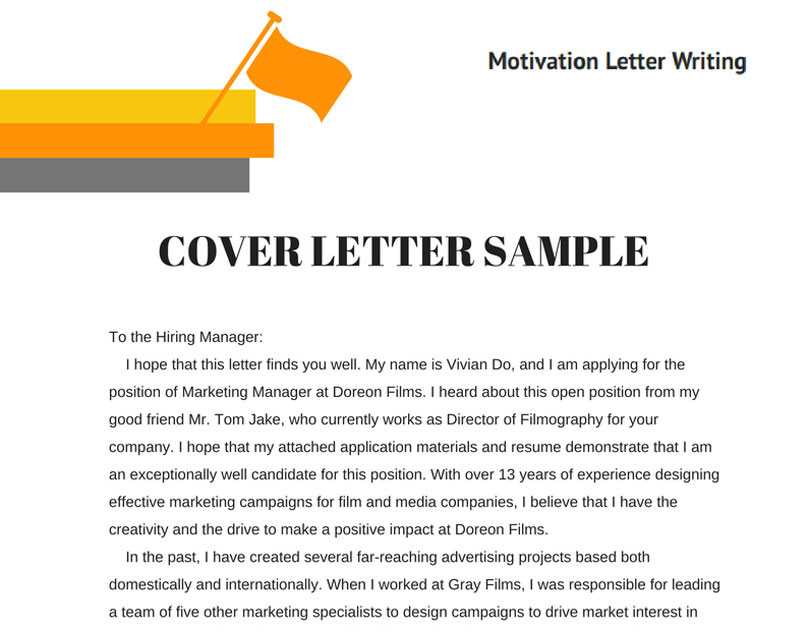
Begin your motivation letter with a clear statement of your intent. Mention the specific position, program, or opportunity you’re applying for, and highlight why you’re excited about it. This approach immediately shows your enthusiasm and establishes your purpose.
Focus on how your skills and experiences align with the position. Use concrete examples to demonstrate your abilities. Mention past achievements that are directly relevant to the role or field you’re applying for. This gives the reader a clear picture of what you can bring to the table.
Close your letter with a strong call to action. Reaffirm your interest in the opportunity and express your eagerness for the next steps. Finish with a confident yet polite statement, inviting further discussion or an interview. Keep the tone positive and forward-looking.
Choosing the Right Template for Your Letter
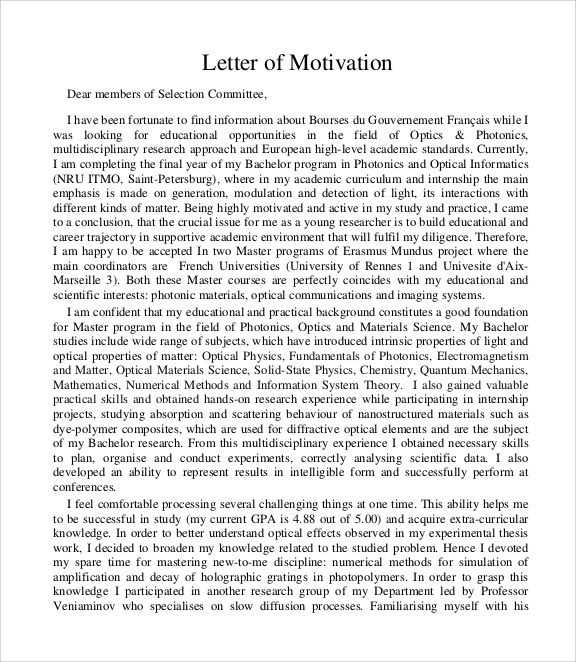
Select a template that aligns with the tone and purpose of your letter. A formal application letter requires a structured format, while a casual letter may benefit from a more relaxed design. Ensure the template you pick allows you to highlight your key points clearly without distractions.
Consider the Audience
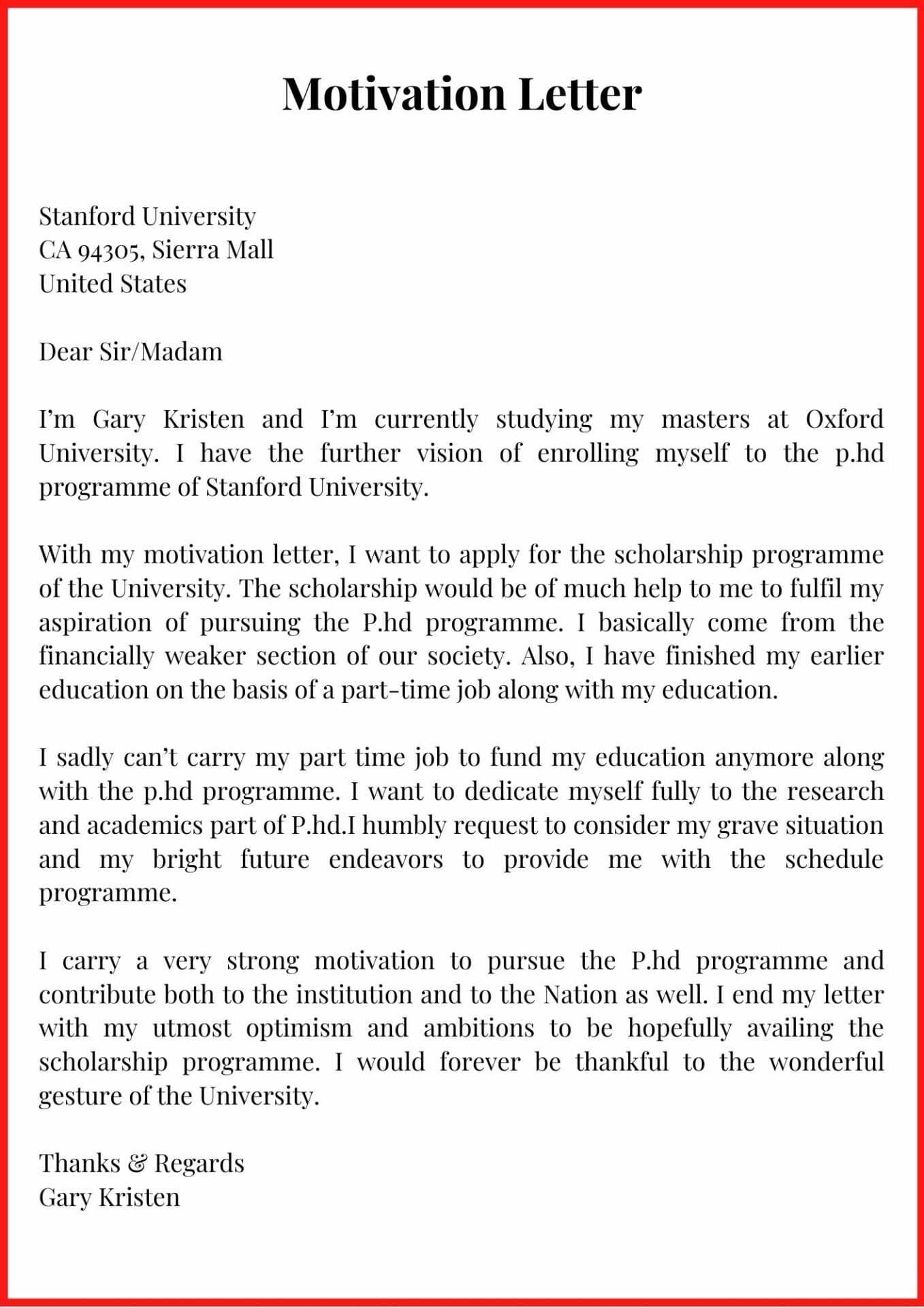
The first step is to understand who will read your letter. A business template with clean lines and professional fonts works best for corporate settings. On the other hand, for a letter to a non-profit organization, a slightly more personal and creative design might make a better impression.
Keep It Simple
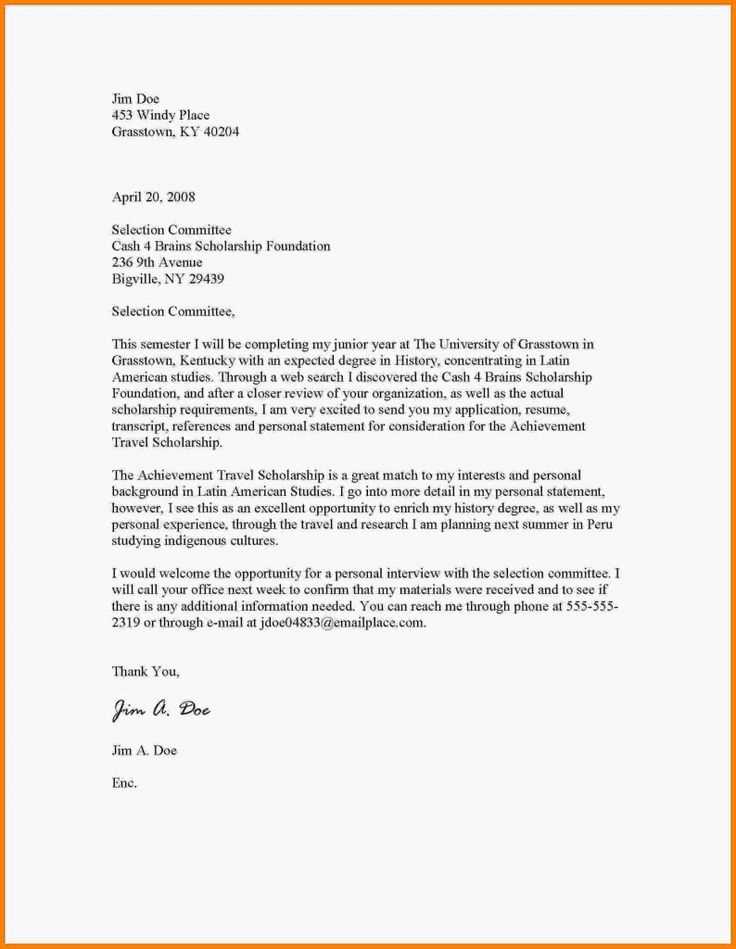
Avoid templates overloaded with graphics or excessive formatting. A straightforward layout with space for your information and a clear call to action is often the most effective. Focus on readability–ensure text size and spacing are comfortable for the reader.
How to Structure Your Motivation Letter
Begin by addressing the recipient. Use their name if possible, showing you’ve done your research. Keep the tone respectful and professional, but approachable.
Next, in your opening paragraph, clearly state the position or opportunity you’re applying for. Link this to why you are genuinely interested in the role, without overstating your qualifications. Make it clear what draws you to this specific opportunity.
In the second section, highlight relevant skills, experiences, or achievements. Focus on what you bring to the table and how it matches the requirements of the role. Avoid listing everything you’ve done; instead, concentrate on key moments that align directly with the job.
Transition to explaining why you’re a good fit for the company culture or values. Mention your alignment with the company’s goals and how your personal values complement their mission.
Wrap up your letter with a clear call to action. Express your enthusiasm for an interview and your eagerness to discuss how you can contribute. End on a polite note, thanking the reader for their time and consideration.
Key Sections to Include in Your Letter
Begin with a strong opening that clearly states your purpose. If you’re applying for a job, mention the position you’re interested in and where you found the opportunity. Avoid vague introductions; be direct and specific about your intentions.
Introduction
In the introduction, present yourself confidently. State who you are, your professional background, and why you’re a good fit for the role. Keep it concise but engaging, ensuring the reader understands your motivation from the start.
Skills and Experience
Showcase your relevant qualifications. List specific skills, experiences, and accomplishments that align with the job requirements. Use examples to demonstrate how you have successfully applied these skills in previous roles. Make the connection between your background and the company’s needs clear.
Why This Position
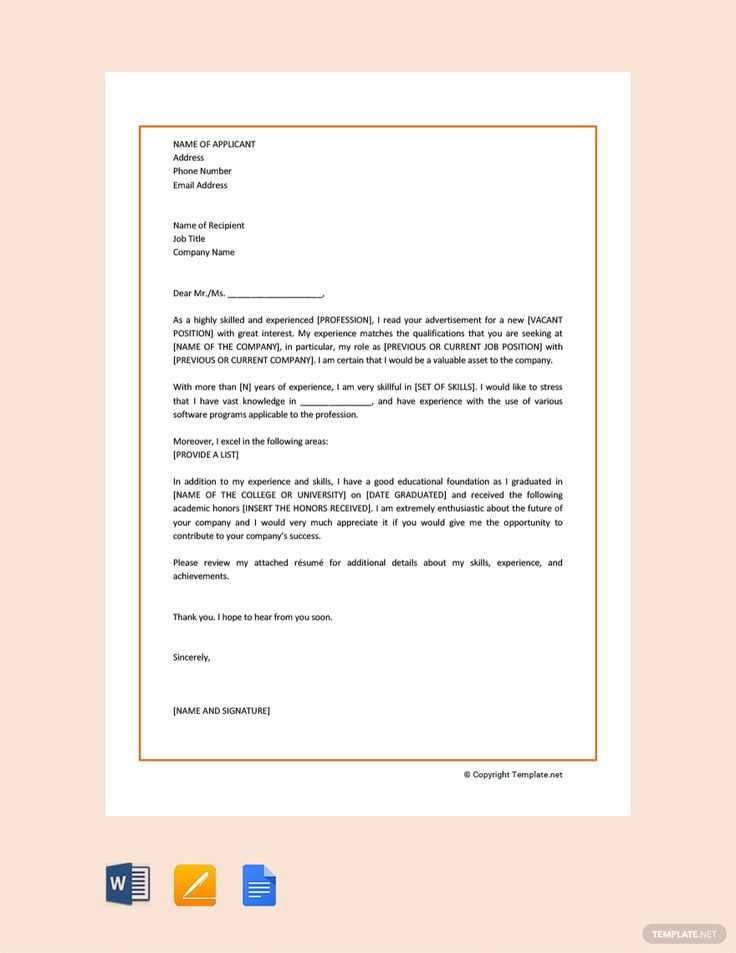
Explain why you’re interested in this particular position. Be specific about what excites you about the company and how your goals align with its mission. This section should convey enthusiasm and a genuine interest in contributing to the team.
Closing Statement
End with a call to action. Express your desire for an interview or further discussion. Reaffirm your enthusiasm and thank the reader for their time. Sign off professionally, and ensure your contact details are clear.
| Section | Purpose |
|---|---|
| Introduction | State your intentions and introduce yourself |
| Skills and Experience | Highlight relevant qualifications and achievements |
| Why This Position | Show interest in the company and position |
| Closing Statement | Request an interview and express appreciation |
Common Mistakes to Avoid When Writing
One of the most frequent errors is overusing generic phrases. Phrases like “I am a quick learner” or “I work well under pressure” can come across as vague and do not set you apart from other candidates. Instead, provide specific examples of your achievements or skills that highlight your unique qualifications.
- Lack of Focus: Avoid rambling or deviating from the main point. A focused, clear message is far more impactful than an overly detailed or scattered response.
- Overloading with Information: Including too many details can overwhelm the reader. Stick to the most relevant facts and keep your writing concise.
- Neglecting Proofreading: Mistakes in grammar, punctuation, or spelling can quickly undermine your credibility. Always take time to proofread your letter before submitting.
- Failing to Address the Recipient: Not addressing the recipient properly can appear impersonal. Always ensure you are addressing the right person with the correct title and formality.
Another issue is using a one-size-fits-all template without customization. Tailoring your letter to fit the specific job or organization shows a genuine interest and effort. Make sure to highlight how your experience aligns with the role and company values.
- Using Excessive Formality: Being overly formal can make your letter sound stiff or robotic. Strike a balance between professional and conversational to engage your reader.
- Ignoring the Job Description: Not referencing key qualifications or responsibilities from the job description can make your letter feel generic. Always match your skills to the job requirements.
Lastly, avoid repeating the content of your resume verbatim. Your motivation letter should complement your resume by explaining your motivations, personality, and why you are passionate about the role.
Personalizing Your Template for Specific Roles
To make your application stand out, tailor your template to the role you’re applying for. Highlight the skills and experiences that directly align with the job description. Use the company’s language from the job posting to demonstrate your familiarity with their culture and needs.
- Review the job listing carefully. Focus on key qualifications and responsibilities mentioned.
- Match your skills to the specific demands of the position. Be clear about how your experience addresses their needs.
- Include examples of relevant achievements or projects that show you can excel in the role.
- Adjust your tone and style to reflect the company’s communication style, whether formal or more casual.
By customizing your letter, you not only show your interest in the position but also demonstrate that you understand the unique challenges and expectations. This small adjustment can make a big difference in grabbing the employer’s attention.
Formatting Tips for a Professional Look
Choose a clean, readable font. Fonts like Arial, Calibri, or Times New Roman work well. Keep the size between 10 and 12 points for body text. Ensure headings are slightly larger for easy navigation.
Spacing and Alignment
Use consistent spacing throughout the letter. Leave one-inch margins on all sides. Maintain single spacing between lines, with a blank line between paragraphs. Align text to the left for a neat and organized appearance.
Consistent Formatting
Keep the formatting uniform across the letter. If you use bold for one heading, do the same for others. Avoid overusing italics or underlines as they can distract from the message.
Proofread the final version to ensure everything is aligned, spaced properly, and free of any formatting inconsistencies.